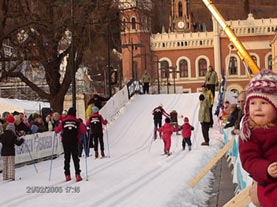We give developers the opportunity to tell us journalists why we should sit up and pay attention to the sites and devices they are working on. Today’s candidate is Skitch.com – an easy way to upload your images.
1) Who are you and what’s it all about?
I’m Mark Pearson and I work for plasq – a company of about 10 people spread around the globe.
We work to make fun, intuitive and expressive software, and are best known for “Comic Life”, an application which makes it easy to turn your digital photos into photo comics.
We’ve now developed Skitch and Skitch.com:
[youtube:http://www.youtube.com/watch?v=60dQekmsEGg&feature=related]2) Why would this be useful to a journalist?
Skitch makes the screen grabbing process enjoyable and very fast.
Journalists involved in the tech industry often need to take many screenshots. Skitch supports many common formats including TIFF, which publishers often need for magazines. If the journalist produces content for online use, jpg and png are available too.
3) Is this it, or is there more to come?
We are just getting started! We recently released two new features to allow you to email images to Skitch.com as well as send images hosted on Skitch.com to twitter.
Combine these two features and you can send images from your camera phone to Skitch.com then automatically have them appear on twitter.
4) Why are you doing this?
To improve and speed up sharing images with others.
5) What does it cost to use it?
Currently while in beta, it is free.
6) How will you make it pay?
We haven’t announced our pricing yet.




